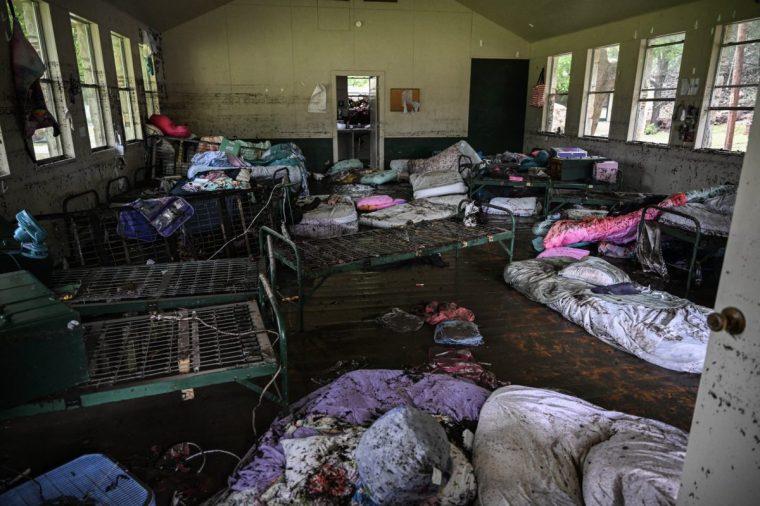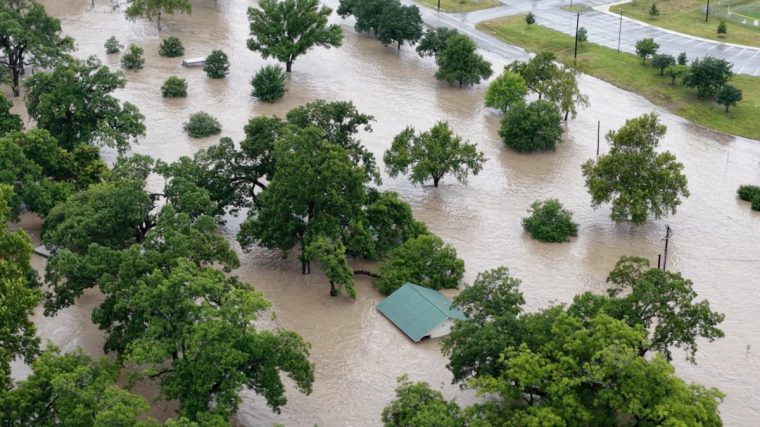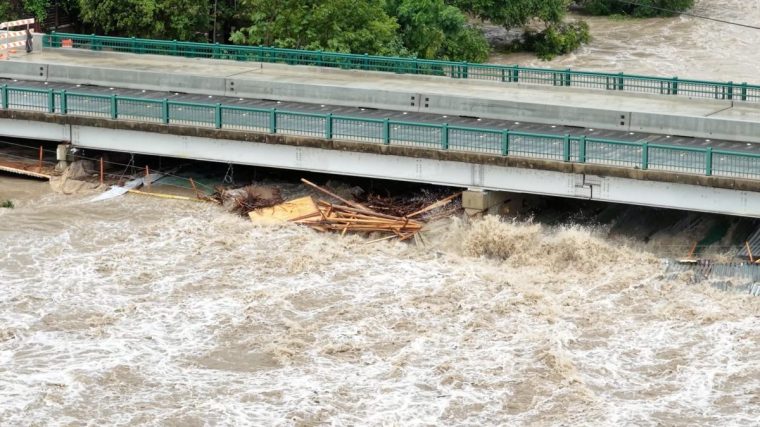Doge slashed the national weather service despite warnings Americans would die – these deaths should be no surprise to the White House
As the search for the dead and the missing continues in Texas, it is becoming increasingly apparent that the scale of the Independence Day tragedy was avoidable. President Donald Trump may soon find himself in the eye of a storm about the storm that devastated summer campgrounds and trailer parks in the rugged beauty of the Texas Hill Country, sweeping children, holidaymakers and local residents to their deaths.
Budget cuts to the National Weather Service and the National Oceanic and Atmospheric Administration (NOAA) ordered by Trump’s Department of Government Efficiency (Doge), combined with the unwillingness of local taxpayers to fund a flood emergency warning system, appear to have contributed to the appalling loss of life that occurred in the early hours of Friday morning.

At least 51 people, including 15 children, have been killed in South and Central Texas, with rescuers still searching for the missing. The worst-affected area was Kerr County, where 43 people died and 27 girls who were staying at a riverside summer camp are missing.
For weeks, meteorologists and storm chasers across the United States have warned that the Trump administration was cutting a wide range of tools and information previously disseminated by the National Weather Service (the American equivalent of the Met Office).
Under Elon Musk’s leadership, Doge – which is unaccountable to Congress and not a real US government department – cut 600 staff members at the weather bureau, equivalent to just over 12 per cent of its total workforce. A hiring freeze was also instituted, leaving previously vacant positions unfilled.

In March, a former weather service forecaster, John Toohey-Morales, warned that people would die as a result of the cuts. “I am telling you, the American people are going to suffer from all this,” he said. “Lives are being put in danger,” Toohey-Morales said.
In April, data compiled by the Associated Press showed that fully one fifth of budgeted posts at the National Weather Service were open. In South Texas itself, senior figures with decades of experience took buyouts offered by the Trump White House, with none being replaced.
In Houston today, just 10 meteorologists remain in an office that previously boasted 16. A single electronics technician now supports operations, rather than the four previously employed. San Angelo, the National Weather Service office closest to the eye of Friday night’s storm, currently lacks a senior hydrologist, a staff forecaster and a meteorologist-in-charge. The New York Times found that in nearby San Antonio, , which covers other areas hit by the floods, significant vacancies include staff who – under normal circumstances – would have co-ordinated emergency warnings to the local community.

In late April, KPRC TV, a television station based in Houston, warned viewers of the difficulties the Doge cuts were creating. “What’s Going On At The National Weather Service Office in Houston?” asked the NBC station on-air and online.
KPRC’s Chief Meterologist Anthony Yanez said his biggest concern about the cuts was “burnout… the employees who stay behind are being asked to do more with less, and it’s tough. But when your job is to issue timely weather warnings that protect lives, the burden becomes even heavier”
In the hours since the devastating floods deluged the Hill Country with 1.8 trillion gallons of rain on Friday, leading the Guadalupe River to rise by 26 feet in a mere 45 minutes, it has become evident that warnings of the storm’s severity were all issued after midnight. Before that, the National Weather Service – at 3.35pm on Thursday – had merely noted that “pockets of heavy rain are expected and may result in flooding”. It issued a relatively low-level “flood watch” to residents, with no suggestion of any need to evacuate.

By midnight, the warnings were slowly intensifying. At 12:42am the flood watch was expanded and a “flood warning” was issued. At 1.26am – long after most campers, especially youngsters, were tucked up in bed – a fresh bulletin warned of possible “significant impacts” from the storm. At 4:06am came the first hint of the storm’s scale, with the National Weather Service reporting “a very dangerous flash-flooding event is ongoing. Turn Around, Don’t Drown!”
Finally, at 5.23am the Service declared a flash-flood emergency, warning of “a PARTICULARLY DANGEROUS SITUATION” and “a severe threat to human life”. By then, it was too late to save people who were already being swept away.
The chief of the Texas Emergency Management Division, W Nim Kidd, told reporters on Saturday that the National Weather Service had failed to prepare local authorities adequately. “Everybody got the forecast from the National Weather Service, right? You all got it, you’re all in media, y’all got that forecast. It did not predict the amount of rain that we saw,” he said.

Trump administration officials are circling the wagons, fearing public fury will soon be directed at the White House over the budget cuts. Director of Homeland Security, Kristi Noem, insisted on Saturday that “everybody knows the weather is extremely difficult to predict”. Visiting the affected area, she promised angry local officials that she would “carry your concerns back to the federal government… we will do all we can to fix those kinds of things that may have felt like a failure to you and to your community members”.
Noem defended the government, adding: “When President Trump took office…he said he wanted to fix, and is currently upgrading the technology. And the National Weather Service has indicated that with that and NOAA, that we needed to renew this ancient system that has been left in place with the federal government for many, many years, and that is the reforms that are ongoing.”
Trump’s cuts to the National Weather Service have been fuelled by a belief that private, for-profit companies can perform many of the responsibilities traditionally the preserve of government employees. On Saturday, AccuWeather – the largest privately owned weather forecasting company in America, with strong ties to the Republican Party – took extraordinary steps to promote its own forecasts and blamed the local community for the scale of the tragedy.
Crowing that the company had provided warnings of the flooding’s scale 30 minutes earlier than the government-run service, AccuWeather’s Chief Meteorologist Jonathan Porter argued that “evacuations… could have been undertaken to reduce the risk of fatalities, had the organisers of impacted camps and local officials heeded the warnings”. In a message seemingly directed to the White House he maintained that AccuWeather’s bulletins “provided officials with ample time to evacuate camps… and get people to safety”. No supporting evidence was provided to back up the company’s claim.
A National Weather Service spokeswoman told The Times that the agency was “heartbroken by the tragic loss of life” and “remains committed to our mission to serve the American public through our forecasts and decision support services”.
